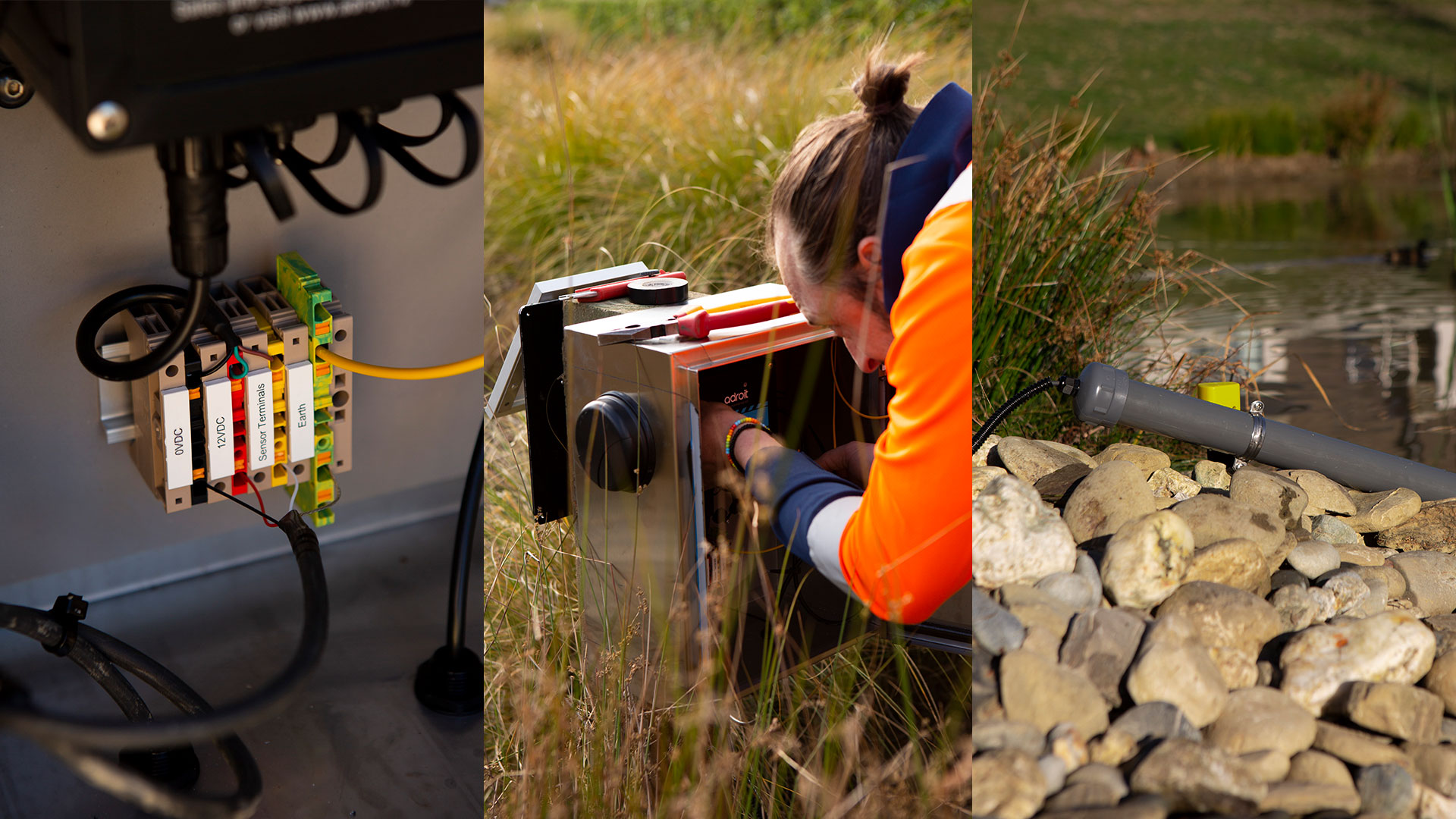Queenstown Lakes – Measuring Turbidity in Stormwater Overflow

Overview
The Queenstown Lakes District Council (QLDC) approached Environmental IoT monitoring specialist Adroit, seeking a solution to ensure that stormwater run-off wasn’t taking sediment off the land and into the lakes, rivers and aquifers.
This sediment, described as turbidity – the murkiness or cloudiness that is often seen where a river enters a lake for example – can be a result of slips and/or erosion, but can also be caused by manmade actions, such as subdivision, industrial development and construction.
Apart from being unsightly, turbidity in runoff can impact water quality, oxygen levels and can increase the potential for algal blooms. It can also destroy natural habitats for native flora and fauna, and sediment can also silt up in waterways, creating challenges for navigation and potential for flooding.

The Installation
Adroit worked with QLDC to develop a custom installation designed for one specific outcome: to measure the turbidity of stormwater overflows after weather events.
The brief called for sensors to be physically installed on the top of overflow rock pits, taking measurements as the pond fills with storm water, and starts to overflow over the rock and into the surrounding ecosystem.
There were some challenges around this project: sensors were required to ONLY report on overflow events, so, instead of being permanently immersed in a waterway, this installation called for the sensors to be installed dry. So, they literally only get wet when it rains and the channel overflows.
It’s not a normal practice to install a sensor in a dry environment and many sensors cannot achieve this requirement. So, the Adroit solution used an In-Situ brand turbidity sensor that uses sapphire lenses – so grit, rocks and stones of the environment won’t scratch the lenses.
Adroit worked with the supplier to get approval to install these sensors in a dry environment and installation guidance to achieve that.
There were also a number of variables that the Adroit team had to work around. A key issue was to evaluate how deployment pipes were placed in the environment to actually measure the overflow when it’s required and how high the water was going to flow to.
Because Adroit couldn’t ever see the overflow happening (because they can’t install when it’s wet), they worked with the customer to make some really clear assumptions about placement.
The installation was also required to be discrete – as Queenstown is naturally very proud of its pristine environment, so plastic sensor cases and boxes would not be acceptable. So, Adroit utilised stainless steel enclosures that would blend into the environment, hiding the installation behind trees and grasses where possible, that would in effect, hide the unit altogether.
The solution also required that the sensors be freestanding and not hard-wired to any infrastructure. So the Adroit installation is powered using the standard Libelium five-watt solar panel, with data constantly reported via the Spark Cat M1 Network.
While sensors are only required to report storm water runoff events, data from the sensors is always being delivered, with the value reported as zero until the water hits it. Data is sent to the Adroit Platform where it can be displayed on most types of digital devices and viewed by management and staff with responsibility for environmental decision making..
Data can be downloaded in various formats to be integrated with other reporting platforms and management systems. And alerts can be set up to notify of adverse events 24/7.

Results
The Adroit installations for QLDC have been a success, with the sensors effectively providing real-time data to the Council since installation. There have been a number of significant weather events since installation and the Adroit platform has been validated in the conditions it was designed for.
In the process, Adroit also developed a number of improvements to the system to allow discrete, dry installation in environments subject to extreme weather. Data from the sensors can now be utilised by Council to identify sources of turbidity and to help develop mitigations where a negative event has occurred.

Adroit Environmental Monitoring Solutions
As an end to end solution provider, Adroit supplied the device hardware, IoT connectivity, nationwide installation, maintenance, and ongoing support.
Adroit has proven solutions, not just for construction, but for all environmental monitoring applications, including waterway and water catchment monitoring, agriculture and aquaculture water quality monitoring, workplace environmental monitoring, and solutions for urban and regional environmental monitoring.